The Dance of the Veggies P2: Crop Rotation
Many gardeners have heard that crop rotation is a good idea, but there's a lot of confusion out there over how to make it happen. Especially when you’re working with a city-sized space or a container garden, a lot of advice you’ll find out there can sound impossible to follow. But, once you understand the basics of crop rotation and how you can apply it at a small scale, your veggies will reward you with vibrant growth, better production, and fewer pest and disease problems.
Crop rotation is sometimes confused with succession planting, which we covered in the previous post of this dancing veggies series. But while succession planting is about using your space wisely during a single growing season, crop rotation means changing the placement of your crops from one season to the next. Let us explain.
Rather than planting the same crop in the same place year after year, crop rotation is all about varying what gets planted where as much as possible. There are two main reasons to do this: to reduce issues with pests and disease, and to improve the health of the soil. We'll dig into both of those, and specific tips for crop rotation plans that help with each goal.

Crop Rotation for Pest and Disease Control
Different crops attract different pests and diseases. For example, powdery mildew is notorious for affecting cucumbers and squash. Some diseases are even specific to only certain families of plants.
When a pest finds a patch of its favorite host plant, it figures it has a good thing going and settles in for the long haul. Many of these organisms overwinter in the soil right where their favorite plant grew the previous season, ready to thrive in the same location come spring.
That's where crop rotation comes in. When those pests emerge, they won’t find a ready buffet laid out for them. Instead, they’ll find a different crop that they may not like as much or may not be able to infect or feast on at all.
Some of them may well still find their favorite plant wherever it has moved to. A few might even decide to settle for whatever you planted right where they emerged. But by moving your crops around each year, you'll be breaking up pest life cycles, which definitely gives you and your veggies the upper hand.
Keep in mind that even without crop rotation, you may not find yourself with a big problem the second year that you plant the same crop in the same place. You may even get lucky for quite a few seasons. But your chances of an infestation increase with each year that plants in the same family are planted in the same place, because pests and diseases have a way of building up in the soil over time.
It’s All in the (Botanical) Family
As you plan your crop rotation for pest management, there’s one more thing you need to keep in mind. Pests don’t usually care what variety, species, or genus a plant belongs to. What makes a difference for them tends to be botanical families.

"Family" is a term botanists use to describe plants that are closely related to each other, even though they belong to different species or genera. Plants within the same family usually appeal to the same pests, even if they might look or taste very different to us humans. So if you really want to get an A+ in crop rotation, you’ll want to study up on your plants’ family trees.
Here are a few common garden veggies, organized by family:
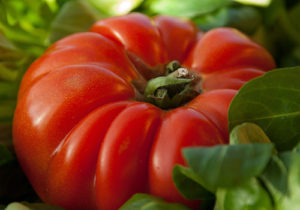
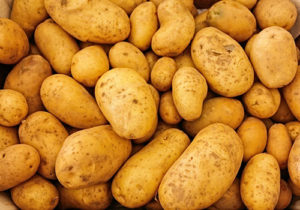
Tomatoes, peppers, eggplants, tomatillos, ground cherries, and potatoes are in the Solanaceae, or nightshade family.
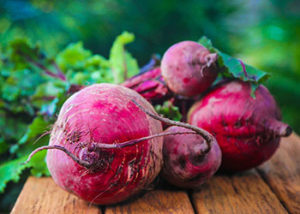
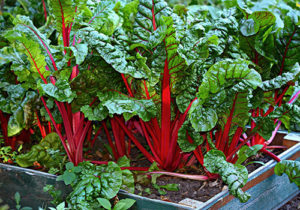
Swiss chard, beets, and spinach are in the Amaranthaceae family, also known as the amaranth family. Swiss chard and beets are actually just different varieties of the same species!
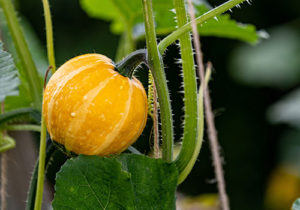
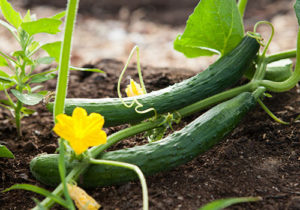 Cucumbers, summer squash including zucchini, and winter squash including pumpkins are in the Cucurbitaceae family, also known as the gourd family.
Cucumbers, summer squash including zucchini, and winter squash including pumpkins are in the Cucurbitaceae family, also known as the gourd family.
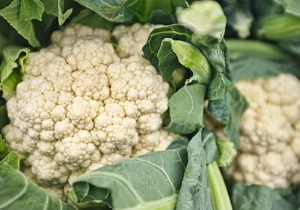
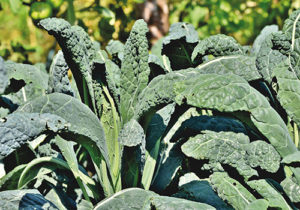
Broccoli, cauliflower, cabbage, Brussels sprouts, kale, radishes, and mustard greens are in the Brassicaceae family, also known as the cabbage and mustard family.
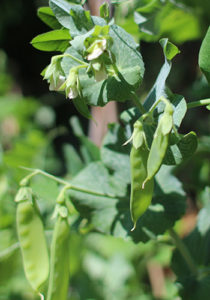
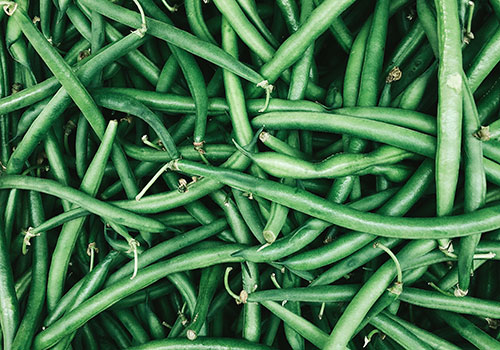 And finally, beans, peas, and fava beans are in the Fabaceae family, also known as the legume family.
And finally, beans, peas, and fava beans are in the Fabaceae family, also known as the legume family.
For more complete information about crop families, visit The Seed Savers Exchange.
But if you'd prefer not to keep track of all that, don't worry. Most gardeners gain a strong intuitive understanding of which crops are related and which pests tend to affect them over time. To start with, it will go a long way to simply try not to grow the exact same crop in the same place for more than a couple of years in a row.
Crop Rotation for Soil Health
Reducing pests and disease is fantastic, but there’s a second excellent reason to rotate your crops: to improve the health of your soil, which in turn improves the health of your plants! Since there's a different goal here, the method is also slightly different. Instead of focusing on plant families, focus on how each crop uses specific nutrients in the soil.
Gardeners who want to keep things a little simpler may choose to focus just on the first goal of managing pests and diseases, since nutrients can always be added to the soil using organic slow-release fertilizer. But, if you'd like to reduce your need for regular fertilizer, you may want to incorporate this goal into your plans.
In some ways, this approach to crop rotation is much simpler. Typical rotation plans for soil health place all crops into just four relatively intuitive categories: leaves, fruits, roots, and legumes.
You'll remember legumes from the plant family list above. That family gets its own category here because legumes have a special superpower: they form these amazing symbiotic relationships with bacteria in the soil, which have a knack for capturing nitrogen from the air and turning it into fertilizer. Legumes therefore tend to actually restore more nutrients to the soil than they remove.
This video does a great job of explaining how the above process, called nitrogen fixation, works. But keep in mind that in the video when they talk about the downsides of fertilizer, they’re talking specifically about synthetic fertilizers. Organic fertilizer and compost, which we recommend here at Sky, is not harmful to soil life.
The other three categories are just what they sound like. Leaf crops like lettuce or cabbage are grown for their greens. Fruit crops like peppers or zucchini are grown for their seed-containing fruit. And root crops like carrots and radishes are grown for their large roots. These different categories of crops use up nutrients in different ratios, and in general the fruit crops use the most.
The main idea of this method is to rotate through the four categories. So for example, your four-year rotation plan for a given spot might look like: kale (leaf) in year one, eggplant (fruit) in year two, beets (root) in year three, and finally fava beans (legumes) in year four. Then in the fifth year, you could rotate back to a leafy green, either the same one you grew before or a different one. See? Simple enough!
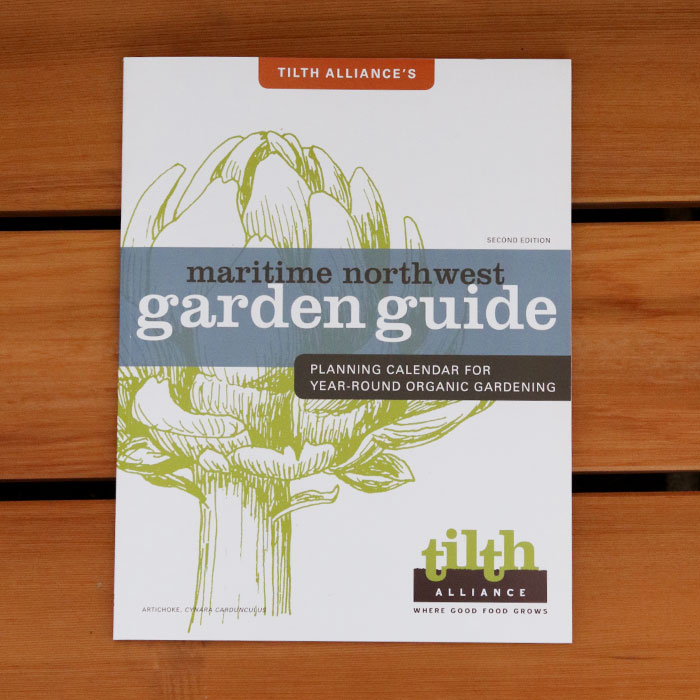 If you'd like a little more elaboration on these topics, the Maritime Garden Guide from Tilth Alliance is an excellent resource! Copies are available on the bookshelves at Sky.
If you'd like a little more elaboration on these topics, the Maritime Garden Guide from Tilth Alliance is an excellent resource! Copies are available on the bookshelves at Sky.
Combining Both Crop Rotation Goals
How much of a crop rotation enthusiast would you like to be? The choice is entirely yours! If you’re feeling excited about it, you can definitely combine both crop rotation goals. It just takes some careful planning.
In fact, if you’re reading very carefully, you might have noticed that the example plan above combines both of the crop rotation goals we’ve talked about. Kale is a brassica and a leaf, eggplant is a solanum and a fruit, beets are in the amaranth family and a root, and of course fava beans have their own special place in both crop rotation systems as a legume.
Rotating Crops in Small Spaces & Container Gardens
Of course, it’s much easier to move crops around each year when you have lots of space to move them around in. But many Seattle-area gardeners don’t have that luxury. Never fear! You don’t have to give up on your crop rotation dreams. You just need to plan carefully and get a bit creative. Here are some ideas for how to adapt rotation principles to meet your small-space needs.
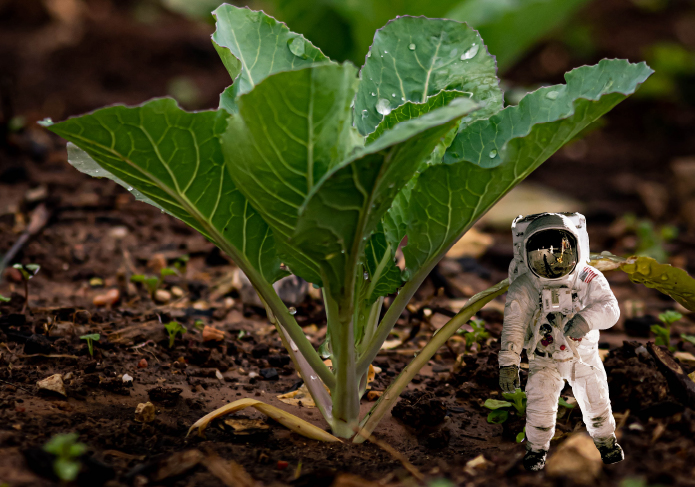
A small step for you,
a great leap for pest-kind
First of all, keep in mind that you don’t need to move your crops vast distances. Even a few feet can be a significant distance to a tiny fungus spore or insect. Of course, bigger moves make a bigger difference. But every little bit counts. So don’t let it stop you from rotating your crops if you can only rotate them on a micro-scale. Move them around as much as you can.
Similarly, some crop rotation plans talk about very long periods of time, like not planting the same family in the same spot again for four years or more. This can be necessary in some extreme disease-management cases, but it isn’t really relevant for most small-scale home gardeners. You don’t even have to rotate your crops every year. Rotating them every few years will still make a big difference compared to planting them in the same layout for decades.
Make the Most of Containers
Here’s a great thing about containers: you can make them into entirely new planting areas whenever you want by swapping out the soil! You may not want to change the potting soil in all of your containers every year, since that isn’t necessary and can get costly quickly, but it’s nice to have the option.
Containers can also add flexibility by allowing you to take advantage of sunny locations that may have poor soil, or no soil at all. Maybe you only have one full-sun garden bed, for example. If you’re stuck with that one bed as your only option for sun-loving veggies, that’s going to present a big crop rotation challenge. But if you have a sunny deck, driveway, or porch, perhaps you could rotate each sun-loving crop between your bed and a container garden.
If you garden entirely in containers, this all applies to you as well. Just change which container is home to which family of plants as often as you can, and change out your soil when you’ve exhausted your options.
Rotate Which Crops You Grow in the First Place
If you are really struggling for space and you suspect that certain pests may be building up, you might consider taking a break from their preferred plant families entirely for a little while. It might be hard to skip growing a favorite veggie for a year or two, but it’s an option that might help those crops thrive again once they return to your garden.
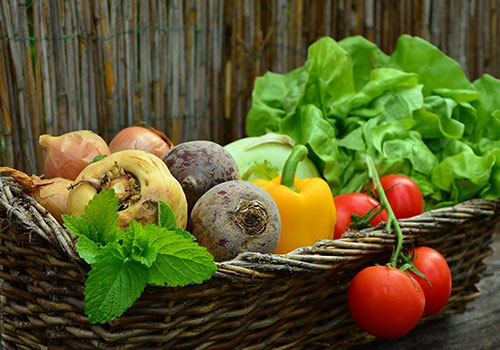
Learn As You Grow
Crop rotation is one of those “lifetime to master” kinds of skills. If you aren’t ready to jump in and create a detailed 10 year crop rotation plan right this minute, please rest assured that that is totally fine! Just start by taking notes about what you plant where each year, and trying to change it up as much as you can. Over time, you’ll learn more about what strategies work for you. The most important step is just giving it a try!
